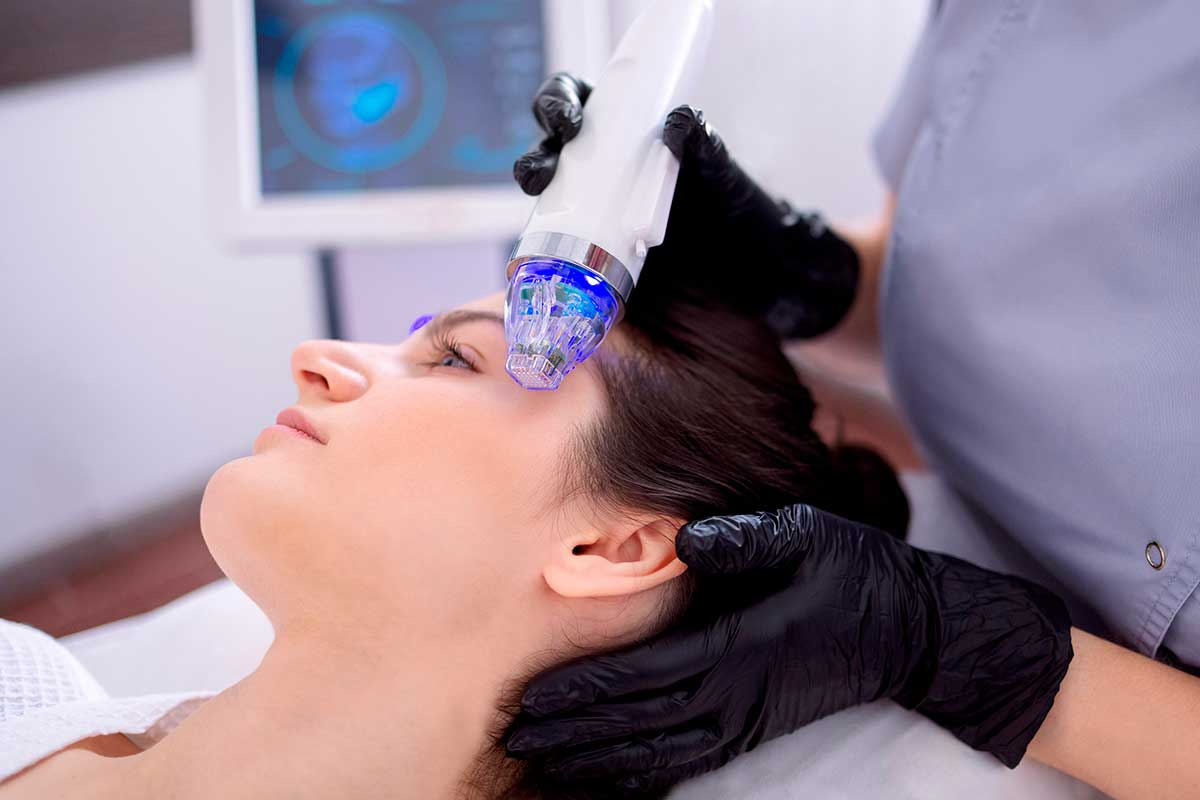
Radiofrequency
Watch our video about Radiofrequency
What is Radiofrequency?
Radiofrequency (RF) is a non-invasive cosmetic procedure that uses energy waves to heat the deeper layers of the skin. This heat stimulates collagen and elastin production, which are essential for maintaining skin firmness and elasticity.
At Clinic Consultation, our radiofrequency treatments are performed using advanced technology, ensuring safe and effective results. It is a popular choice for individuals seeking to rejuvenate their skin, reduce sagging, and improve overall skin texture without surgery.
What is Radiofrequency Used For?
Radiofrequency is primarily used to tighten the skin, reduce the appearance of wrinkles, and contour specific areas of the face and body. It is also effective in improving the appearance of cellulite, enhancing skin texture, and stimulating lymphatic drainage to reduce puffiness.
In addition to its cosmetic benefits, radiofrequency can be used for post-surgical recovery, helping to minimise swelling and improve scar appearance. At Clinic Consultation, we tailor radiofrequency treatments to target your specific skin and body concerns.
What is the Effect of Radiofrequency?
The primary effect of radiofrequency is firmer, smoother, and more youthful-looking skin. By stimulating collagen production, it enhances skin elasticity and reduces sagging, wrinkles, and fine lines. The procedure also improves circulation and promotes cell renewal, leaving the skin radiant and revitalised.
Results are both immediate and progressive, with skin continuing to improve over several weeks as collagen rebuilds. At Clinic Consultation, our goal is to deliver natural, long-lasting enhancements that boost confidence and restore skin vitality.
Does Radiofrequency Have Any Contraindications?
While radiofrequency is safe for most individuals, there are some contraindications:
- Pregnancy or Breastfeeding: RF treatments are not recommended during these periods.
- Active Skin Infections: Conditions like acne or rosacea should be addressed before treatment.
- Metal Implants: Individuals with pacemakers or metal implants in the treatment area may not be suitable.
- Severe Skin Sensitivity: RF may not be appropriate for highly sensitive skin types.
- Autoimmune Diseases: Conditions like lupus may increase sensitivity to treatment.
At Clinic Consultation, we conduct thorough consultations to ensure the procedure is safe and effective for every patient.
How is the Radiofrequency Procedure Performed?
The radiofrequency procedure begins with a consultation to determine the treatment areas and desired outcomes. A specialised device is then used to deliver controlled RF energy to the targeted areas. The sensation is often described as a warm, relaxing massage.
Each session typically lasts 30-60 minutes, depending on the size of the treatment area. No anaesthesia is required, and there is no downtime, allowing patients to resume normal activities immediately. At Clinic Consultation, we prioritise patient comfort and use cutting-edge equipment for optimal results.
Advantages of Radiofrequency
Radiofrequency offers a wide range of benefits for skin tightening and rejuvenation:
Non-Invasive
Achieves significant improvements without surgery or downtime.Improves Skin Elasticity
Stimulates collagen production for firmer, tighter skin.Reduces Wrinkles and Fine Lines
Smooths signs of ageing for a youthful appearance.Contours the Face and Body
Enhances the jawline, neck, and other areas with subtle lifting effects.Minimises Cellulite
Reduces the appearance of dimpled skin on the thighs, buttocks, or arms.Enhances Skin Texture
Promotes smoother, more radiant skin.Immediate and Progressive Results
Provides instant improvements that continue to develop over time.
How Long Does the Effect of Radiofrequency Last?
The effects of radiofrequency can last 6-12 months, depending on individual factors such as skin type, age, and lifestyle. Maintenance sessions every 3-6 months are recommended to sustain and enhance the results.
At Clinic Consultation, we work with patients to develop personalised treatment plans to achieve and maintain their desired outcomes.
Who is Radiofrequency Suitable For?
Radiofrequency is ideal for individuals who:
- Want to improve skin firmness and elasticity.
- Are looking to reduce wrinkles and fine lines.
- Desire non-surgical body contouring or cellulite reduction.
- Have mild to moderate skin sagging on the face or body.
- Seek a rejuvenated, more youthful appearance without downtime.
Our specialists at Clinic Consultation assess each patient’s goals and skin condition to determine the best approach for treatment.
What Are the Alternatives for Those Who Cannot Have Radiofrequency?
For individuals who may not be suitable candidates for radiofrequency, alternative treatments include:
- Ultrasound Therapy: Uses sound waves for deep skin tightening.
- Microneedling: Stimulates collagen production for improved skin texture.
- Chemical Peels: Exfoliates and renews the skin surface.
- Laser Treatments: Targets wrinkles, pigmentation, and texture concerns.
- Topical Skincare Products: Non-invasive options to maintain skin health.
At Clinic Consultation, we provide a range of treatments to suit different needs and preferences.
Book Your Radiofrequency Treatment at Clinic Consultation
Radiofrequency is a safe and effective way to rejuvenate and tighten your skin for a smoother, more youthful appearance. At Clinic Consultation, our expert team uses advanced techniques and technology to deliver exceptional results. Schedule your radiofrequency consultation online today and take the first step towards revitalised skin.
Click here to schedule an appointment online